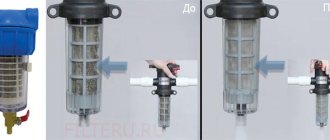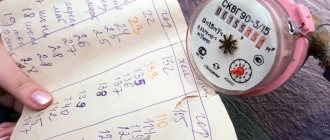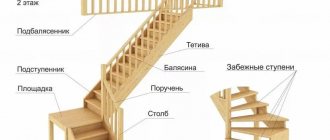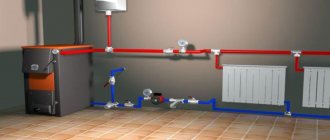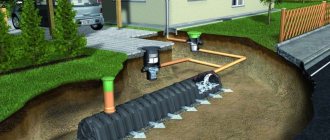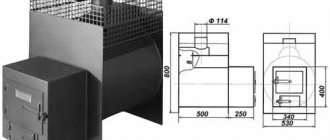The article presents a pragmatic approach to creating one of the elements of a Smart Home - economical flood protection (anti-leakage) based on a universal home automation controller. The main differences from the solutions to this problem previously presented on Habré are ease of implementation, relatively cheap + you don’t need to be a programmer to repeat it. True, you will still have to solder, but only 2 times.
On Habré, as a resource for technically active people, where people in need go for advice and solutions to problems, there are many articles on the topic of Smart Home. And often in the comments there are regrets that no one has yet come up with a simultaneously powerful, easy-to-learn and economical way to implement a Smart Home for ordinary people. Either you need to solder, then you need to code, often in different languages: for the microcontroller, for the web, and so on. And so that he could take it, buy spare parts-cubes for inexpensively and personally launch it himself - this rarely happens.
So I decided to insert my 5 cents, since it seems that I just came across one of the options for implementing a Smart Home, which may be suitable for many pragmatically minded consumers.
I will tell you using the example of implementing flood protection, although already on the same controller I have a security alarm system, temperature recording and automatic shutdown of the necessary sockets when leaving home.
So, according to my “Maslow’s pyramid of needs for a Smart Home” (c) - the importance of alarms and flood prevention is at the same level as the importance of alarms about intrusion or smoke.
Maslow's pyramid of needs for a smart home
For the scale of the tragedy can be terrifying:
Due to the fact that I recently acquired a universal smart home controller and have already implemented more important functionality, I decided that it was time to “lay down the straws.”
So, if a water leak was detected, I wanted to receive an alert (SMS and/or email) and have the water supply to the apartment automatically shut off. And also be able to open and shut off the water manually, including remotely via the Internet. There are a number of ready-made kits for a complete or partial solution to this problem, but, firstly, they are, to put it mildly, expensive, and secondly, having a universal smart home control controller in your hands, you can do all this yourself and it will be no worse, and even better, because that everything will be integrated into a single system and will interact exactly as I want, and not as the system manufacturer decided. And considering that the most expensive part of the system already exists (the controller), we get rid of duplication and redundancy. The current structure of my Smart Home system. The components directly involved in the Anti-Leak system are highlighted in red.
The desktop layout of the applied part of the anti-leakage system looked like this:
I now get hot water by heating cold water in a boiler. Therefore, only one pipe needs to be closed.
If necessary, the system can be simply expanded and the second pipe can be shut off simply by adding another valve and connecting it in parallel to the radio relay.
The essence and choice of a protective system
Any home, even one equipped with the latest plumbing, can experience leaks or flooding. This happens for the following reasons:
- one of the family members accidentally forgot to turn off the tap;
- the tubes supplying water to the washing machine, dishwasher and other household appliances are damaged;
- the water pipe network has worn out;
- sanitary fixtures, as well as fittings suitable for it, turned out to be defective.
Protection against water leaks is integrated into a system consisting of special sensors, taps for quickly shutting it off if necessary, and a block that controls this. In order for such protection to work properly, sensors are placed in those places where water leakage is most likely (under bathtubs, sinks, water heating appliances, dishwashers).
A crack in a pipe can turn into a flood Source aaactionwaterproofing.com
Wireless sensors (as opposed to wired ones) are convenient because they can be located anywhere. After contact with water, they send a conditioned signal to the control unit, which blocks the water flow in time by closing a conventional ball or electromagnetic valve. Some kits are also equipped with a special GSM module, which transmits a signal about a leak to the owner’s smartphone. Water leak protection systems and how they compare with each other should be studied before purchasing.
When selecting an anti-leakage system, you should consider:
- the ability to purchase convenient wireless options;
- the presence of an indicator function showing the current state of ball valves and spare power;
- diameter of water pipes;
- equipping with system backup power supply;
- the ability to identify leaks along several lines at once and connect the system to the smart home network;
- presence of a signal when it becomes necessary to replace batteries;
- possibility of manual backup control in emergency situations;
- number of sensors included;
The anti-flood system in the house will send a message to your mobile phone in time Source oboiman.ru
- availability of monitoring of hot and cold water consumption with results displayed in a mobile phone application.
Also, when choosing, it is important to consider additional functions. For example, the functionality that automatically turns the taps once or twice a month is very useful so that they do not turn sour.
By the way! The system connected to the electrical network can only be used if there are grounded outlets.
Protection against flooding can be immediate, when sensors perceive a certain water level at the moment when flooding has already begun. The second, more used and effective method of protection is the prevention of water leaks, when a sensor reaction can occur even with a slight leak. This way you can prevent a major accident and avoid damaging the furniture.
See also: Catalog of companies that specialize in water supply, sewerage and related work
Types of leakage sensors
Currently, there are several types of leakage sensors:
Wired. Such models operate from the network. They are characterized by low cost and simple design;
Wireless. More expensive devices that can operate on battery power.
Sensors can also be divided into the following classes:
- Hydrostatic. The devices in question determine the pressure of the water column;
- Capacitive. More complex models, the task of which is to highly accurately measure the capacitance between installed plates;
- Electrode. The devices are capable of assessing the electrical conductivity of water passing through them;
- Radar. Such models can change the properties of fluid flow;
- Ultrasonic. The main task is the propagation of special sound waves in the pipeline;
- Float The simplest option that can float on water.
More about some systems
If you are interested in the question of a water leak protection system and which one is better to choose, it is worth considering several options.
"Neptune"
According to the considered decision of experts from the Moscow business magazine, this system, which appeared back in 2000, is the most popular.
“Neptune” Source neptun-wifi.ru
The particular convenience of purchasing a Neptun system is that the consumer has plenty to choose from. This brand represents a whole line of different systems: from inexpensive ten-thousandth units to systems running under smartphone control.
Any of the wireless anti-leak devices can be installed in any, even the most inaccessible places of the house. Whether you purchase a ready-made kit or purchase components, anyone can assemble their own system. The ball valves with which the Neptune system is equipped are produced by the famous company Bugatti (manufactured in Italy). They have a powerful motor, excellent seals and manual controls that can be used in the event of an accident. Some systems have this function: once or twice a month the taps are rotated at the command of the control unit.
"Aquawatchman"
Domestic consumers are pleased with such a complex device as the “Akvastorozh” (leakage protection system). It is distinguished by the fastest possible automatic blocking of emergency valves in the closed position.
“Aquawatchman” Source ovk-term.ru
Radio relay
To supply power to the drive, I purchased this two-channel radio relay from the list of those compatible with the controller on ebay.
Type YKT-02XX-433 The 1527 encoder chip, so beloved by Chinese manufacturers, is installed inside.
It contains 10-amp relays, so, in principle, they can switch almost any household load up to 250V. Limit 2 kW.
To control the electric drive, this is more than enough, since the valve drive is powered by 12 V and, according to the passport, consumes only 4 W, and only when the valve state changes.
This radio relay can operate in several modes, one of which is exactly what we need: mutual blocking of channels. In this mode, when the relay of one channel is turned on, the relay of the other channel is automatically turned off. Thus, we “almost in hardware” protect against the simultaneous supply of voltage to the “opening” and “closing” of the valve electric drive solenoid due to any glitches.
Connection diagram for valve, receiver:
Video description
This video shows how the leakage protection system is installed:
In the presented Aquastop system there are no sensors whose contacts close when water hits them. Instead, there are pressure gauges that respond to changes in water pressure and shut off safety valves if necessary. It works as follows. When the pressure in the water supply system is stable, thanks to the internal spring, the valve remains open, and when the pressure drops (during a hole in the pipe or hose), the spring shuts off the water by closing the valve. To determine the presence of abnormal pressure, the system takes readings at the inlet and outlet.
Motorized valve
As a valve that shuts off the water, you can use any valve that has an electric drive and an appropriate size connection to the pipe.
I tested my prototype on a Chinese valve with an electric drive for a 1/2-inch pipe.
The valve's motor drive design automatically cuts off power to the coil after opening or closing. Thus, there is no need to use commands from the controller to remove the voltage through the radio relay after the operation has been completed.
Briefly about the main thing
The anti-water leakage system prevents unpleasant consequences that may arise due to flooding of the house if water for some reason begins to leak out of the plumbing system.
Special devices that protect against home floods are equipped with wired or wireless sensors that detect the presence of high humidity.
Among the leakage protection systems produced, there are examples of different functionality, equipped with all the necessary parts for installation.
Ratings 0
Control
As the “brains” of the system, I used Nanoserver NS1000, a universal controller from the domestic manufacturer 1-M Smart Home.
Controller capabilities that are used in one way or another in this project: • Support for low-cost wireless sensors and radio relays. • Execution of scripts offline (even without the Internet). • Event notification via SMS and email. • Elementary compilation of “scenarios” for the operation of the system without writing code. • Ability to control devices from a smartphone (Android). • Management via WEB. • Keeping “logs”.
What can cause leaks?
A flood can be caused by dozens of reasons. Let's look at the most common of them:
- Negligence of the owner of the apartment or office. Overflowing of the sink or bathtub as a result of carelessness of household members. In the case of a multi-story building, such a flood causes damage to the owner of the affected apartment and the property of neighbors living below.
- Failure of the water supply system. Buying and renovating an apartment is rarely complete without replacing pipes and radiators. But the expired service life of pipes in the risers of residential buildings will also lead to an accident. Sewerage breakdown due to blockage or wear of pipes.
- Installation of pipes and fittings in a hurry. Experience shows that when finishing premises you should not skimp on plumbing equipment and competent repairmen. Unprofessional installation of pipes can lead to disaster: damage to property.
It is always easier to prevent than to eliminate, so timely monitoring of water supply and heating systems significantly reduces the risk of leaks.
How and from what to make a housing for a signaling device
The housing for the alarm should be equally miniature. The most suitable size option is a lid from a liter milk can or from a package of soap bubbles.
The undoubted disadvantage of the device is the fact that the alarm will only help if you are at home. The beeper will not help in your absence. Here we need other means of control that are capable of transmitting a danger signal remotely. It won't be as cheap, but no less effective. The smart home system will help you control everything that happens on your territory, even if you are away. Here is an example of such a system:
Watch this video on YouTube
Think about how much easier your life will be with such devices. A little work and you will protect yourself from unpleasant surprises. What do you think about this? Do you use any devices to avoid leaks? Share your experience with our readers in the comments!
Which leakage protection system to choose?
The first thing you need to decide when choosing a system is the type of home. Some sensors are suitable only for apartments or only for private houses, which is what manufacturers are trying to emphasize. If any sensor from the list is suitable for installation in an apartment, then for a country house or private house in the city, the best choice would be devices from the Gidrolock brand.
For large rooms where there may be problems with synchronizing sensors, it is worth choosing systems equipped with the ability to remotely control or connect to Wi-Fi. Of the presented ones, this is “Neptun Profi WiFi”.
If your financial capabilities allow you to buy only a budget model, you can choose SPYHEAT TRITON 15-002 without fear. The device performs its functions perfectly and has all the necessary equipment.
Aqua watchman: review
“Aquawatch” is the most advanced mechanism for protecting your home in the event of a leak. The main advantage of the device is the ability to expand the kit with additional units and sensors. The standard Aqua Watch kit includes a controller, 4 leakage sensors, 2 electric ball valves, a power supply, batteries and connecting wires. This protection is presented on the market in two performance classes: “Classic” and “Expert”. Both classes have a basic and PRO modification depending on the features of the controller.
Features of the packages
Both “Classic” and “Expert” shut off taps during an emergency and maintain autonomous operation. Both sets support connection to the Smart Home system, and the PRO versions are supplemented with a special relay to connect the pump.
The differences in the controllers of the two configurations are presented in the table:
| Characteristic | Model "Aquawatch-Classic" | Model "Aquawatch-Expert" |
| Number of additionally connected taps | 6 | 5 |
| Light indication of breakdown of each tap | — | + |
| Monitoring open circuit (wire) of sensors | — | + |
| Closing taps when the wire sensor circuit is broken | — | + |
| Individual light indication of a lost sensor | — | + |
| Individual light indication of a flooded sensor | — | + |
Advantages of "Aquawatch"
Users of this security system noted the following characteristics:
Autonomous work. Manufacturers promise up to 9 years of continuous operation in standby mode when using three battery packs.
Intuitive interface and ease of installation. The installation of the Aquawatch protection complex is taken into account when creating a house project, but problems rarely arise with later installation. Monitoring sensor breakage.
Safety. The device operates on a voltage of 4.5 volts.
Backup power function.
“Aquaguard” is a good option for protecting large areas; for small offices and apartments it is worth choosing budget complexes of lower power.
Stop Flood "Rainbow"
The Rainbow protective kit contains three functional units:
- Leak sensor.
- Electromechanical water supply blocking valves. After eliminating the emergency situation, the valve returns to its previous state by mechanical cocking.
- The server is a monitoring device capable of checking up to 15 sensors simultaneously.
The response speed of the Rainbow locking mechanism is about 10 seconds. Radio waves are used to operate and transmit signals.
How the device works
Various physical properties of water are taken as the basis for analyzing the presence of leaks.
Sensors that measure electrical conductivity between contacts are most often used to monitor the presence of leaks. Such a circuit, assembled independently, often replaces an industrial design. The contacts themselves are usually made of a foil-covered board, between which an insulating track is cut.
We also recommend that you learn about the faucet with a water switch, how it is designed, works and functions.
Some technical points
Wired sensors usually come with 2 meter cables. Electric ball valves are also sold with the same cable length. This is not always enough. You can increase the length using a cable recommended by the manufacturer. Brands are usually indicated in the instruction manual. Just check the cross-section of the cores when purchasing. Unfortunately, very often the actual diameter is much smaller than the declared one.
Generally speaking, we can recommend the following cables for extension:
- for wired sensors, a shielded twisted pair with a core cross-section of at least 0.35 mm² is suitable;
- for cranes - power cable in two-layer insulation with a core cross-section of at least 0.75 mm².
The correct arrangement of elements is not always obvious.
It is advisable to make the connection serviceable. That is, if you are laying wires in a wall or floor, the connection must be made in a junction box. Connection method - any, reliable (soldering, contactors of any type since the equipment is low-current). It is better to lay wires in walls or floors in cable ducts or pipes. In this case, it will be possible to replace the damaged cable without opening the gate.
Homemade sensor of the simplest design
Despite its primitiveness, the sensor is quite effective. Home craftsmen are attracted by this model due to the cheap cost of radio components and the ability to assemble it literally “on the knee”.
The base element (VT1) is an NPN transistor of the BC515 series (517, 618 and the like). It supplies power to the buzzer (B1). This is the simplest ready-made buzzer with a built-in generator, which can be purchased for pennies, or removed from some old electrical appliance. The power required is about 9 volts (specifically for this circuit). There are options for 3 or 12 volt batteries. In our case, we use a Krona type battery.
How the scheme works
The secret is in the sensitivity of the collector-base transition. As soon as a minimum current begins to flow through it, the emitter opens and power is supplied to the sound element. A squeak is heard. An LED can be connected in parallel, adding visual signaling.
The signal to open the collector junction is given by the very water whose presence needs to be signaled. Electrodes are made from metal that is not subject to corrosion. These could be two pieces of copper wire, which can simply be tinned. Connection points on the diagram: (Electrodes).
You can assemble such a sensor on a breadboard.
Then the device is placed in a plastic box (or a soap dish), with holes made in the bottom. It is advisable that if water gets in, it does not touch the circuit board. If you want aesthetics, the printed circuit board can be etched.
The disadvantage of such a sensor is different sensitivity to different types of water. For example, distillate from a leaking air conditioner may go unnoticed.
Based on the concept: an inexpensive autonomous device, it cannot be integrated into a single security system for your home, even a homemade one.
Tips for choosing
When choosing a system, pay attention to several main aspects:
- Materials. They play an important role. For example, silumin and zinc are brittle materials, and therefore they are not so durable. Faucets made of brass and steel will be good and strong. They do not rust and have a special coating.
- Wire length. It affects the distance of the crane from the controller. Thanks to the long cable, you will ensure fast installation work and high quality results.
- Type of sensors. Wired and wireless are equally effective, although they operate from different sources. For example, wired ones are powered by special controllers, while wireless ones operate on batteries and require periodic replacement.
- Number of sensors. Different manufacturers choose different quantities, and this affects the cost and quality of the signal. We advise you to initially purchase devices with a large number of sensors, otherwise you will have to buy more.

